Garden of Perfect Brightness (Yuanming Yuan)

The Garden of Perfect Brightness is located on 350 hectares of land in west suburban Beijing. Today having only remains of architectural components and foundations, it was a grand imperial garden created by and for the Qing Dynasty (1644-1911) emperors over more than 150 years.

By expressing the essence of palace construction and gardens in south China's Yangtze River Delta, the garden perfectly inherits the Chinese gardening tradition of more than three thousand years. It also draws inspiration from western architecture. The colossal scale and the diverse architectural style of the garden justify its renown as “the garden of myriad gardens” and “a model of all gardening arts”.
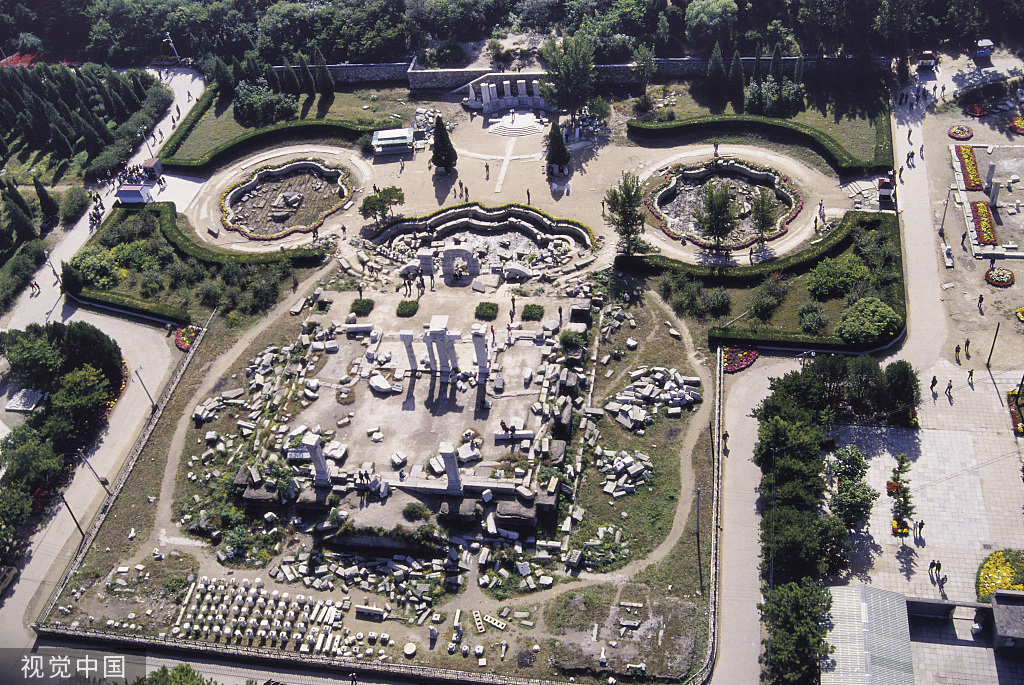
In January 1988 the garden relics was designated a foremost protected cultural heritage site by the State Council.
Originally the garden was a private villa of Yinzhen, the fourth son of the Kangxi Emperor (r. 1662-1722) and the future Yongzheng Emperor (r. 1723-1735). In the following decades, he and his successor, the Qianlong Emperor (r. 1736-1795), commissioned a series of projects to expand and enrich it. From 1747 on, Western Jesuits serving the Qing court in Beijing, including Giuseppe Castiglione (Chinese name Lang Shining, 1688-1766), Jean-Denis Attiret (Chinese name Wang Zhicheng, 1702-1768), Ignatius Sichelbarth (Chinese name Ai Qimeng, 1708-1780), and Pierre d'Incarville (Chinese name Tang Zhizhong, 1706-1757), participated in further design of the garden and its horticulture.

The garden was looted in 1860 by the Anglo-French coalition troops during the Second Opium War (1856-1860), and some of its structures were burned down. Forty years later, in 1900, the architecture’s remains were destroyed again by the Eight-Nation Alliance. After that the spectacular garden gradually fell into desolate ruins.
Jade Terrace of Fabled Abode of Immortals (Pengdao yaotai)
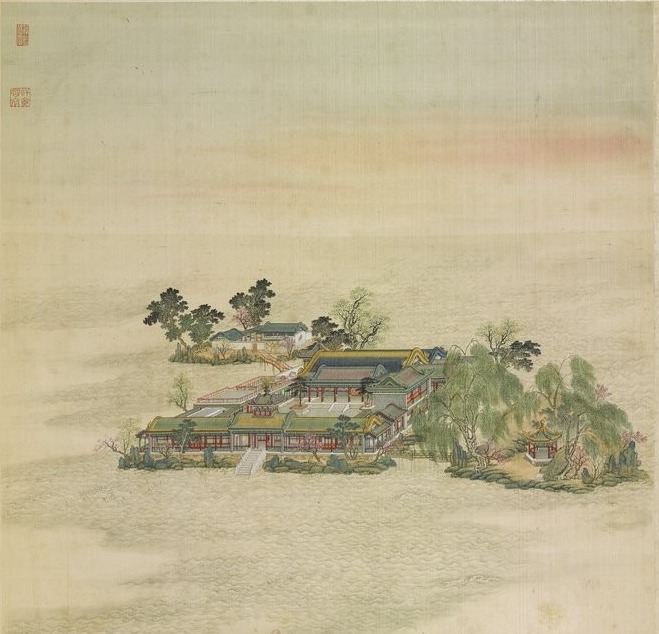
The Penglai Isle is a fairy land described in ancient Chinese mythology. The legendary isle appealed to every emperor wishing for immorality. Following the will of the Yongzheng Emperor, craftsmen built three isles with large craggy stones in the middle of the Blessed Sea (Fu hai), the largest lake in the garden. On each isle halls, pavilions and terraces were built. The spectacle was destroyed by fire. Today only part of it has been restored.
Autumn Moon over the Calm Lake (Pinghu qiuyue)
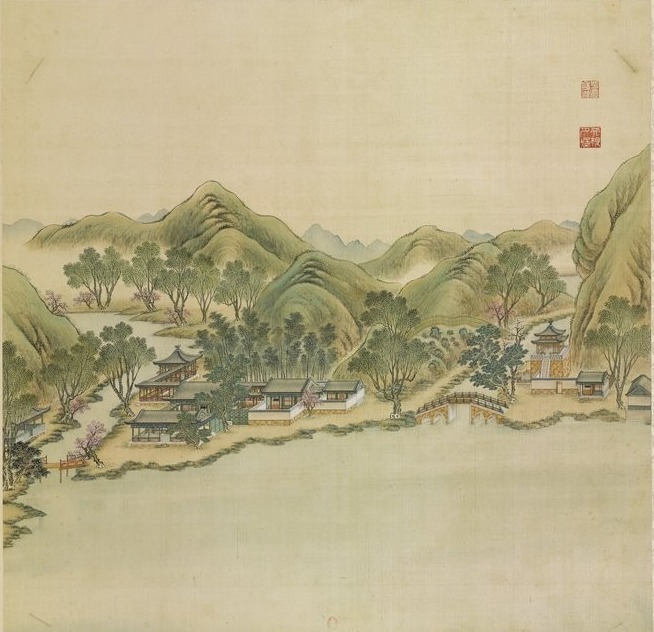
This spectacle was composed of a series of detached waterside buildings on the northern shore of the Blessed Sea. On autumn nights, cool breezes, bright moonlight, sweet osmanthuses and elegant garden buildings harmoniously made a pleasant image with the surrounding environment. With its perfect imitation of the scenery of the same name in the West Lake of Hangzhou, it was considered an ideal place to admire the moon.
Hall of Tranquil Sea (Haiyan tang)

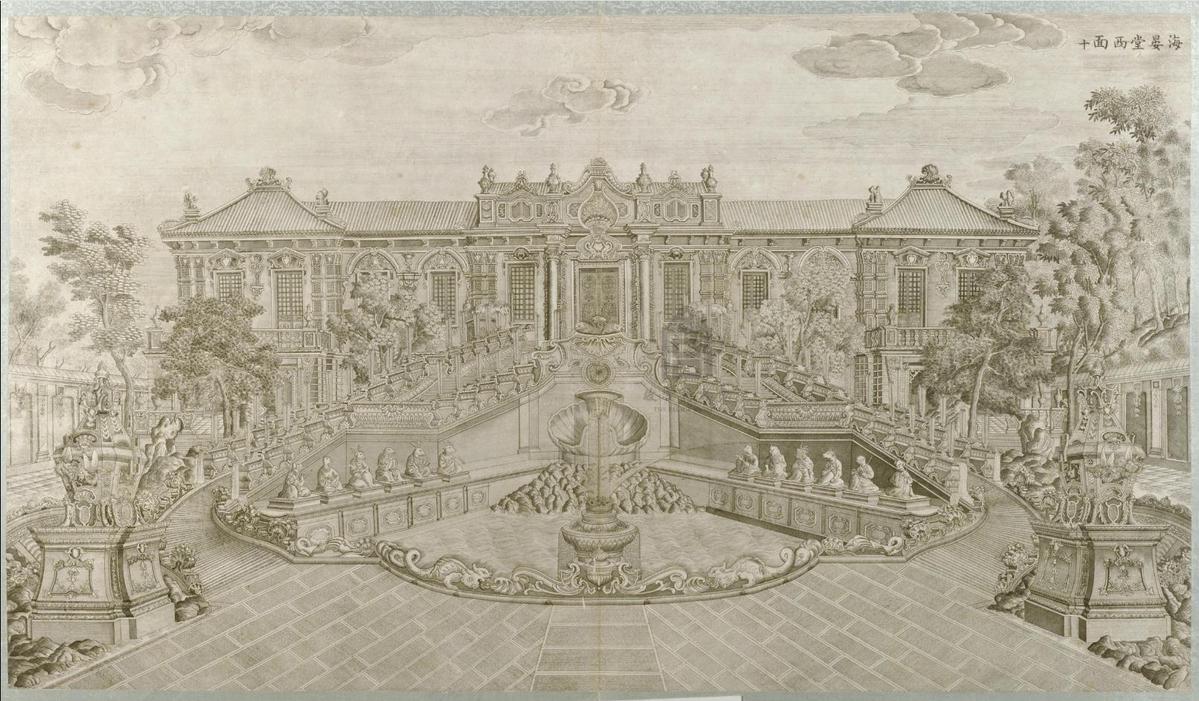
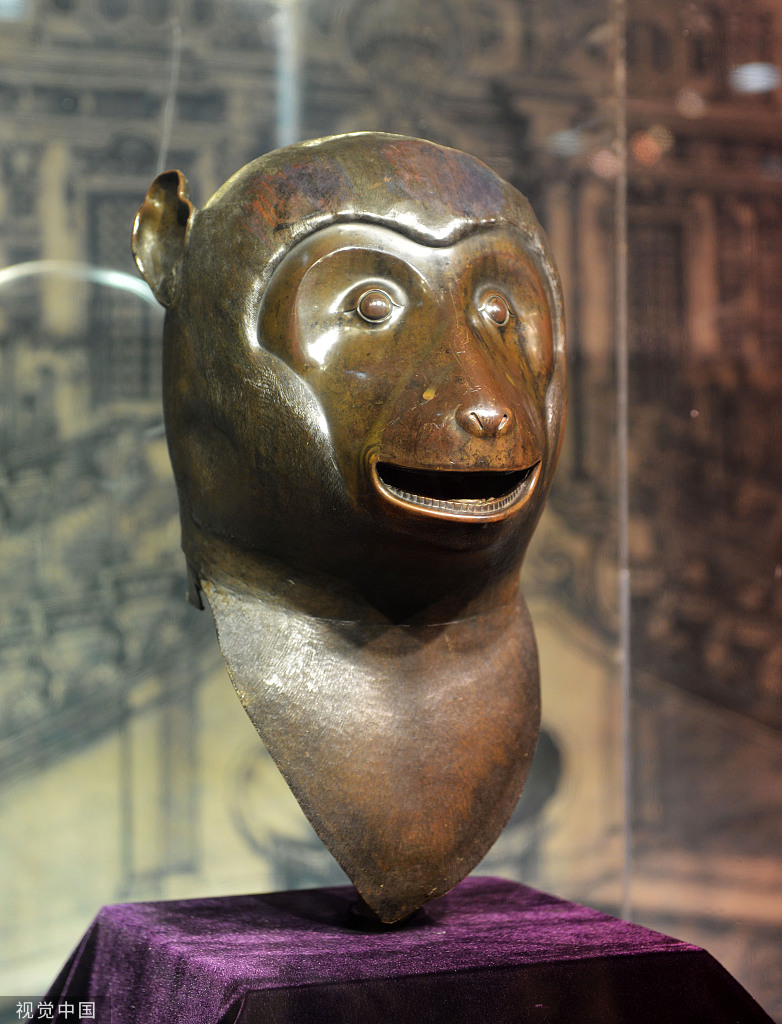
Completed in 1759, the Hall of Tranquil Sea was designed in European style and consisted of buildings, fountains and sculptures. The principal building faced west, with two sets of circular stairs stretching from the gate around the front fountain. To the east of the fountain stood a stone-carved shell with patterns of lush flowers; on its left and right sides, there were 12 copper statues of seated Chinese Zodiac animals, spouting water alternately around the clock. However, the heads of these zodiac statues were scattered abroad after the invasion in 1860. Seven of them have been found and returned to China, and one is preserved in France. Behind the principal building was the H-shaped reservoir flanked on the north and south by two small fountains. However, only a part of this architectural complex exists today.
Grand Fountains (Da shuifa)


Finished around 1795, this scenic spot was a fountain-themed landscape. The main building was a huge stone niche with decorative vaults. Under the middle vault stood a lion-head shaped fountain causing waterfalls to cascade down seven levels of water tables, in front of which laid an oval pond resembling a chrysanthemum flower. There were two grand water spouting towers standing in the left and the right parts of the site. Spouting water through a system of copper pipes, the towers and other fountains made a marvelous spectacle with the surrounding environment. Only the stone niche and three spouting ponds in front of it exist today.
Fountain Hall of Wonderful Pleasures (Xie qiqu)
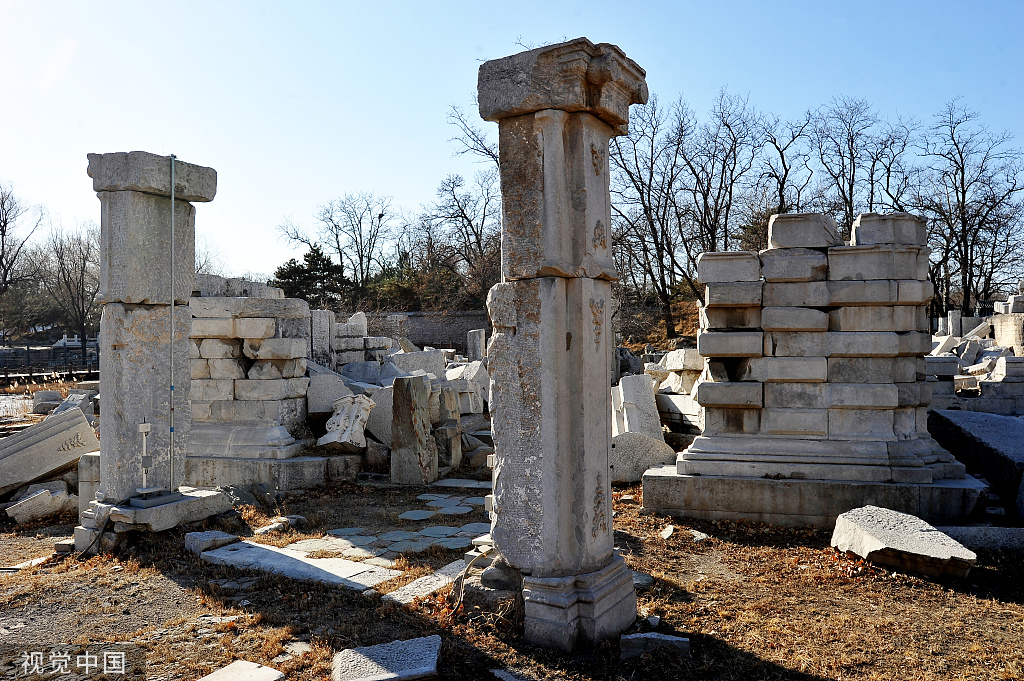

As the first building in European style in the Garden of Perfect Brightness, the Fountain Hall of Wonderful Pleasures, established in the autumn of 1751, served as a venue for both Chinese and Western music. To the south of the hall were a large-size begonia-shaped pond comprised of fountains in the shape of a copper swallow, a copper goat and a stone fish with an upturned tail, while to the north lay a small chrysanthemum-shaped one. There was a reservoir building to the northwest of the hall.
Yellow Flower Formation (Huanghua zhen)
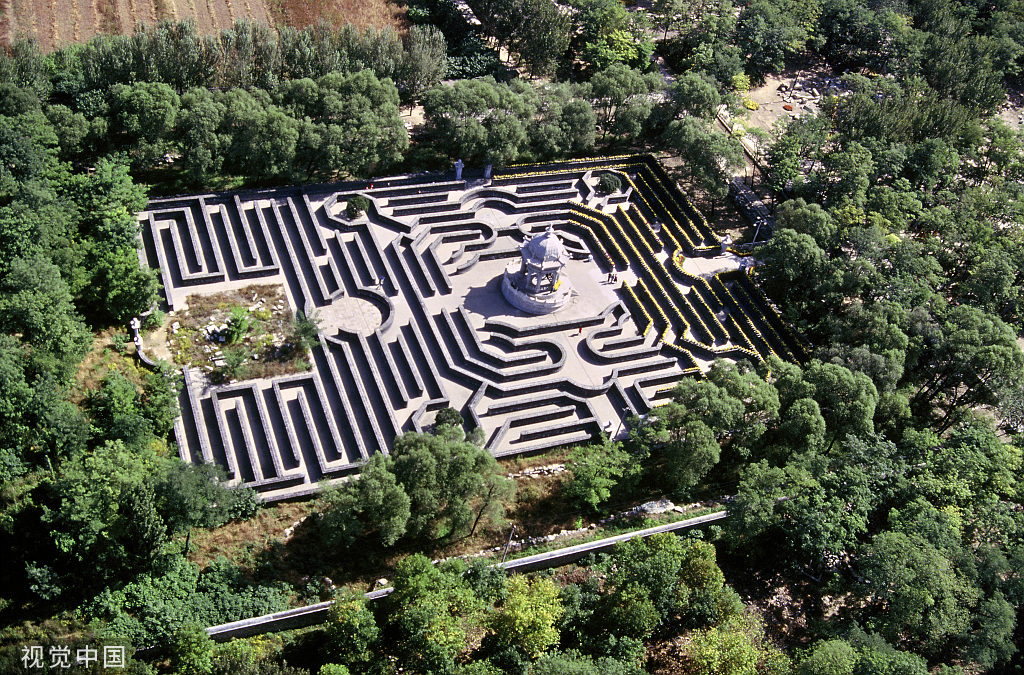
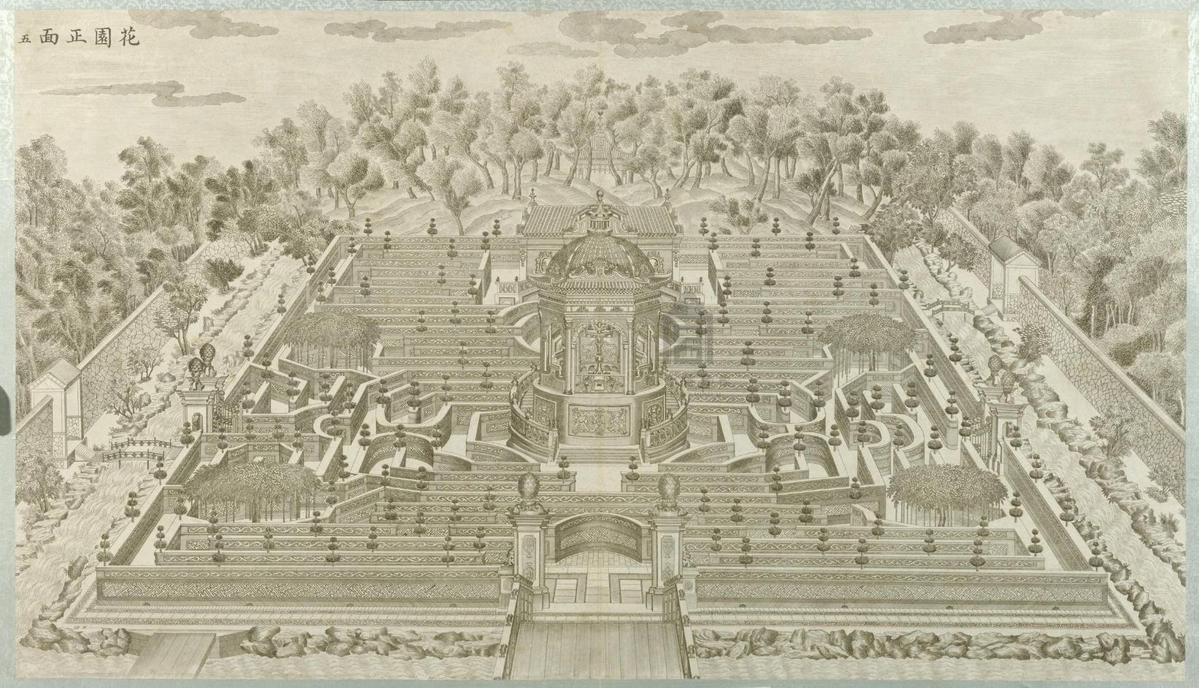
The Yellow Flower Formation was a Western-style maze. This oblong formation stretched from south to north and was centered on an octagonal-ceiling pavilion with a round-base. Over 1,600 meters in length and 1.2 meters in height, the formation wall was decorated with dark bricks carved with swastika patterns. In times of prosperity, the imperial court organized entertainment activities here on the night of the Mid-Autumn Festival. Today the formation is restored to its original state thanks to repair projects conducted in 1987 and 1989.
View of Distant Seas (Yuanying guan)
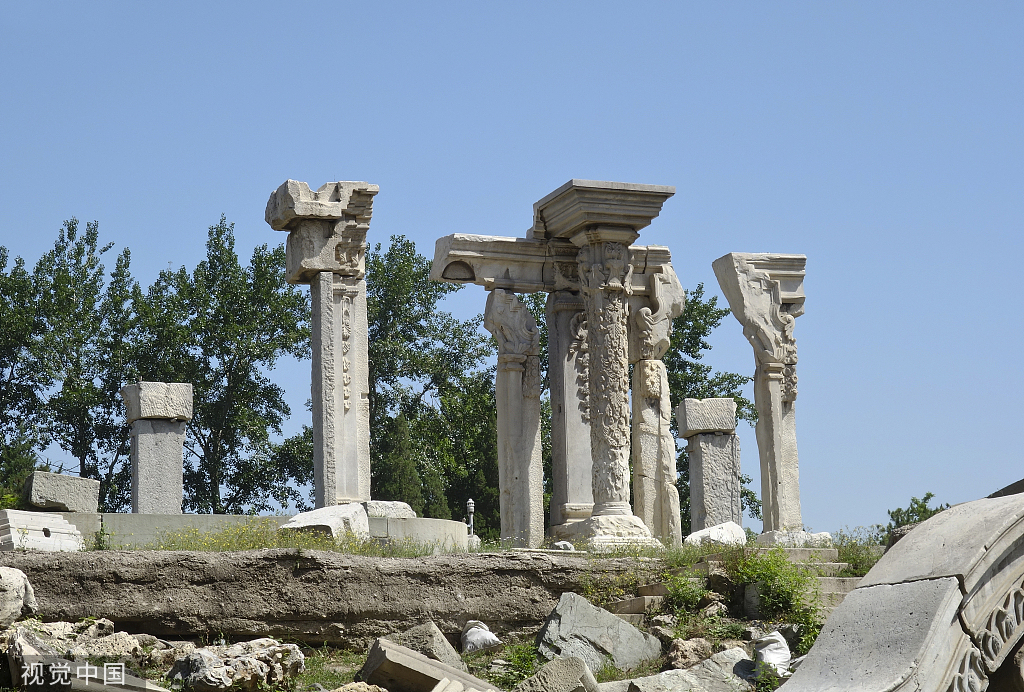

Established in 1783, the View of Distant Seas was a high hall constructed in the style of a Western bell tower. Columns of the hall were all of high-quality white marble. In particular, the two on both sides of the middle vault door were broadly carved with bunches of hanging grapes. The consummate craftsmanship testifies to a masterpiece of the carving arts.




